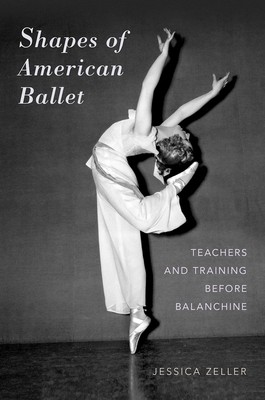
- We will send in 10–14 business days.
- Author: Jessica Zeller
- Publisher: Oxford University Press, USA
- ISBN-10: 0190296690
- ISBN-13: 9780190296698
- Format: 15.5 x 22.6 x 1.5 cm, softcover
- Language: English
- SAVE -10% with code: EXTRA
Reviews
Description
In Shapes of American Ballet: Teachers and Training before Balanchine, Jessica Zeller introduces the first few decades of the twentieth century as an often overlooked, yet critical period for ballet's growth in America. While George Balanchine is often considered the sole creator of American ballet, numerous European and Russian émigrés had been working for decades to build a national ballet with an American identity. These pedagogues and others like them played critical yet largely unacknowledged roles in American ballet's development. Despite their prestigious ballet pedigrees, the dance field's exhaustive focus on Balanchine has led to the neglect of their work during the first few decades of the century, and in this light, this book offers a new perspective on American ballet during the period immediately prior to Balanchine's arrival. Zeller uses hundreds of rare archival documents to illuminate the pedagogies of several significant European and Russian teachers who worked
in New York City. Bringing these contributions into the broader history of American ballet recasts American ballet's identity as diverse-comprised of numerous Euro-Russian and American elements, as opposed to the work of one individual.
EXTRA 10 % discount with code: EXTRA
The promotion ends in 18d.18:07:39
The discount code is valid when purchasing from 10 €. Discounts do not stack.
- Author: Jessica Zeller
- Publisher: Oxford University Press, USA
- ISBN-10: 0190296690
- ISBN-13: 9780190296698
- Format: 15.5 x 22.6 x 1.5 cm, softcover
- Language: English English
In Shapes of American Ballet: Teachers and Training before Balanchine, Jessica Zeller introduces the first few decades of the twentieth century as an often overlooked, yet critical period for ballet's growth in America. While George Balanchine is often considered the sole creator of American ballet, numerous European and Russian émigrés had been working for decades to build a national ballet with an American identity. These pedagogues and others like them played critical yet largely unacknowledged roles in American ballet's development. Despite their prestigious ballet pedigrees, the dance field's exhaustive focus on Balanchine has led to the neglect of their work during the first few decades of the century, and in this light, this book offers a new perspective on American ballet during the period immediately prior to Balanchine's arrival. Zeller uses hundreds of rare archival documents to illuminate the pedagogies of several significant European and Russian teachers who worked
in New York City. Bringing these contributions into the broader history of American ballet recasts American ballet's identity as diverse-comprised of numerous Euro-Russian and American elements, as opposed to the work of one individual.


Reviews